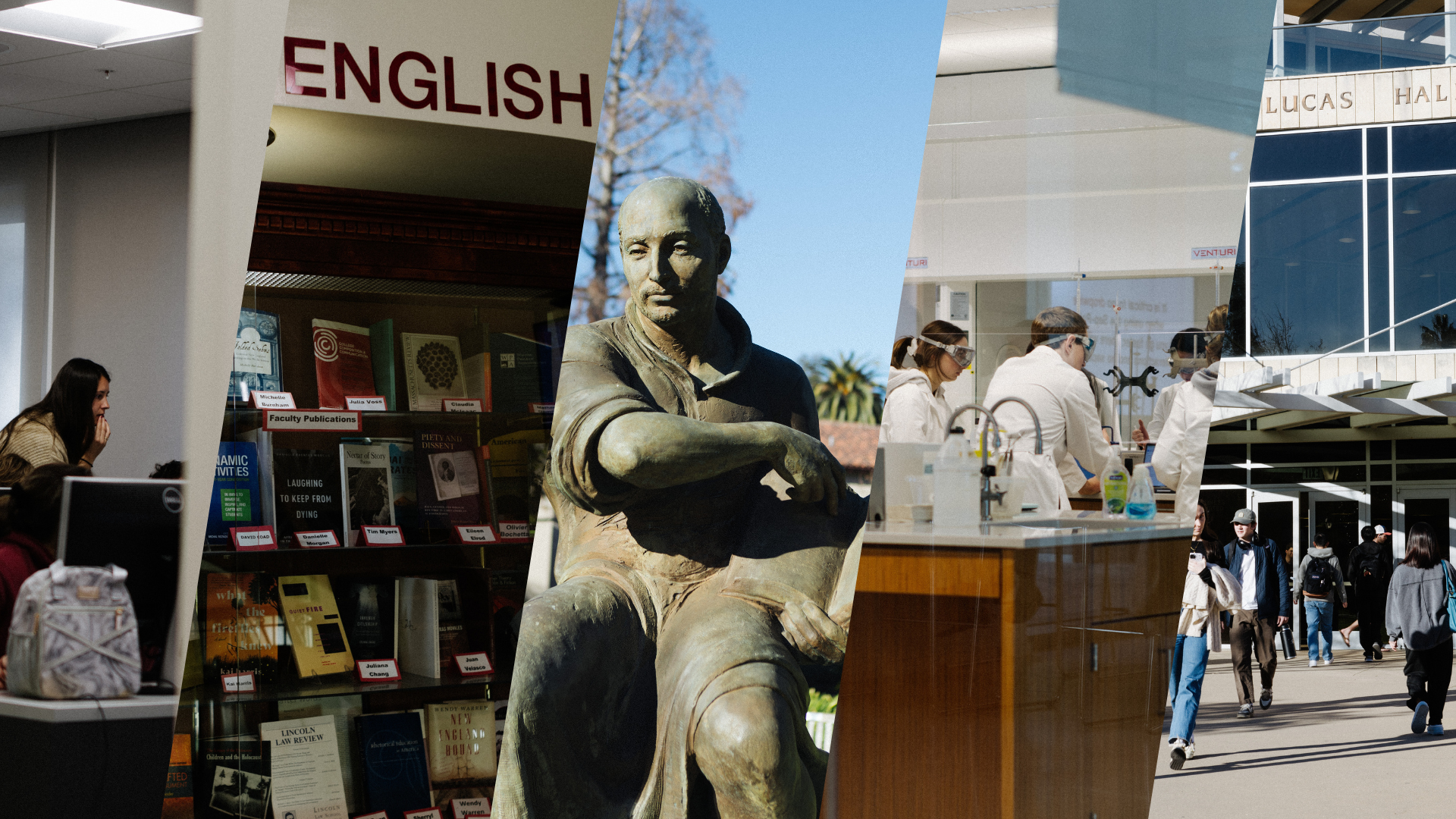A Core Adjustment to Santa Clara University’s Curriculum
Photos by Dylan Ryu.
Twenty-nine years after its establishment, Santa Clara University is revising its core curriculum to better accommodate large major requirements. The potential changes to its requirements are not planned to impact current students, although the earliest pilot run is optimistically scheduled for the 2027-28 academic year.
Santa Clara University’s core curriculum is one of its most unique academic features, fulfilling the University’s mission of a holistic Jesuit education. It touches three main pillars: Knowledge, Habits of Mind and Heart, and Engagement with the World.
“We think that students from across the University should be taking courses with students from across the university, so we’re very interested in promoting classes like CTW and C&I that have everybody mixed in together,” said history professor Naomi Andrews, the Humanities faculty representative for the Core Curriculum Revision Committee, referring to Critical Thinking and Writing and Culture and Ideas courses. “It was a priority of the prior core and it remains a priority for us here; it’s part of what makes a Santa Clara education.”
However, concerns about its hefty 20 requirements, ranging from arts to religion to natural sciences, prompted the University to see where cuts may need to be made.
“We know that the core is too big, that it doesn’t leave enough choices for electives, especially for our engineers and STEM students,” said Andrews. “We have to really identify what the distinctive characteristics of a Santa Clara education look like and what’s extraneous.”
The latest update to the core curriculum occurred on Dec. 15, 2022, when the essay component of the Pathway requirement was erased. While this was a smaller change to the overall core, the goal of the current revision is that “all undergraduate students, regardless of school or major, should have the same core requirements,” according to an email by the Core Curriculum Revision Committee to university faculty.
Currently, students in the School of Engineering fulfill their Arts, Science, Technology and Society and Civic Engagement requirements via their senior design and do not need to take a Second Language class due to larger major requirements.
An important consideration being made with cutting requirements now is how the respective departments will fare.
“For example, if we cut back on religion courses, what does that do to the religion department? These are real people, real life dynamics,” Andrews said. “For me especially, because I teach humanities, we teach a lot of the core and if there’s a real trimming of the core, humanities departments will hurt.”
Students have conflicting views on what changes could mean for their educational career at Santa Clara University.
“Personally, I am a major that's not anything to do with science like that, and having to take a natural science with a lab is not something that has something to do with my major, and that’s just going to be extremely time consuming,” communication major Caroline Shah ’28 said. “So, I don’t think something like that would necessarily be feasible for certain majors.”
However, Madeline Follosco ’26, a computer science and engineering major, has a different perspective as a teaching assistant for ENGR 16, Technology and the Good Life. As a class that counts towards the “Religion, Theology, and Culture 1” core requirement and is prioritized for students in the School of Engineering, it is a highly specific class and one that Follosco believes may wrongly be at risk as the school adjusts its core curriculum.
“I think just beyond the technical that’s so drilled into us, it makes us take a second to think about how we want to use our career and the impacts that industry has,” said Follosco when reflecting on the course content. “Especially with A.I. using a lot of natural resources for the GPUs to be running, there’s a lot of ethical implications that we need to think about as people who have the power to bring that technology to life.”
Andrews personally believes that regardless of core curriculum changes, the University should keep the students’ interests and needs at the forefront of their mission, especially considering the unique location of Santa Clara University.
“We’re the Jesuit university in the Silicon Valley,” said Andrews. “I think we need to really work on difficult dialogues and being able to talk about differences, and that could be practiced in an interdisciplinary classroom. That’s one thing that I hope is an important element in our whole education.”
